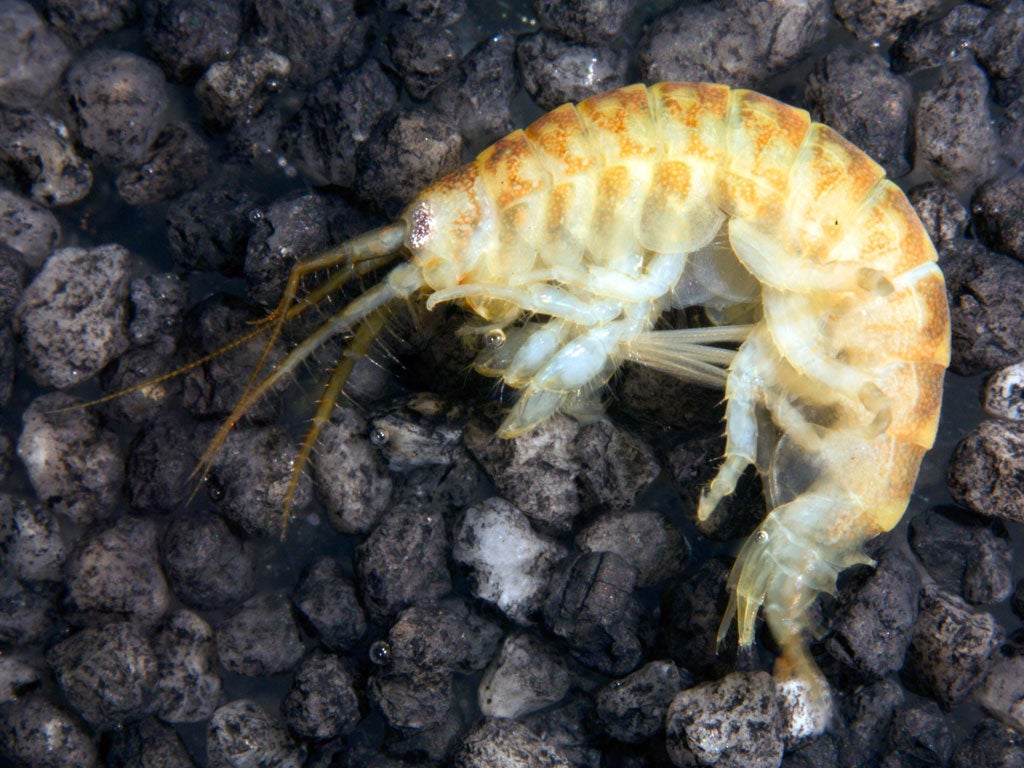The battle against a killer crustacean with an appetite for destruction
Feeding on young fish and tiny aquatic creatures, the invasive species could be disastrous to UK wildlife

Your support helps us to tell the story
From reproductive rights to climate change to Big Tech, The Independent is on the ground when the story is developing. Whether it's investigating the financials of Elon Musk's pro-Trump PAC or producing our latest documentary, 'The A Word', which shines a light on the American women fighting for reproductive rights, we know how important it is to parse out the facts from the messaging.
At such a critical moment in US history, we need reporters on the ground. Your donation allows us to keep sending journalists to speak to both sides of the story.
The Independent is trusted by Americans across the entire political spectrum. And unlike many other quality news outlets, we choose not to lock Americans out of our reporting and analysis with paywalls. We believe quality journalism should be available to everyone, paid for by those who can afford it.
Your support makes all the difference.One of Britain's most dangerous invasive species, the so-called "killer shrimp" which destroys a wide range of water life, has started to spread across the country in a development described yesterday as "potentially disastrous".
First found in Britain two years ago, the small crustacean, originating in Eastern Europe, has a damaging effect on aquatic ecosystems out of all proportion to its size, preying on a range of invertebrates and young fish, and sometimes causing their extinction.
It was first found in Britain in 2010, in South Wales and Graffham Water, the reservoir in Cambridgeshire, and it was thought that a rigorous regime of biosecurity had confined Dikerogammarus villosus to its original locations. But yesterday the Environment Agency announced that it had been found in the Norfolk Broads, Britain's premier destination for boating holidays.
"This is a potentially disastrous development," said Mark Lloyd, the chief executive of the Angling Trust which represents anglers in England. "If it gets widespread through Britain it would dramatically change invertebrate populations of rivers and lakes.
"That might not sound significant, but the whole ecosystem is based on there being a great diversity of invertebrate life, and if you suddenly reduce that diversity greatly, that has knock-on impacts for fish, birds and the ecosystem in general."
He added: "This is one of the worst invasive species Britain has seen, and this is awful for rivers, particularly on top of all the other impacts our rivers are facing, with over-abstraction of water and diffuse pollution, gender-bending chemicals coming out of sewage treatment works." The shrimp has been found in Barton Broad, the second largest of the broads after Hickling Broad, the Environment Agency said.
"We've been closely monitoring for any further signs of the killer shrimp after we first discovered a colony at Grafham Water in 2010," said the agency's invasive species expert, Mark Diamond. "It may be small but it poses a huge threat to native wildlife in rivers, lakes and streams. The shrimp's presence could affect the UK's ability to meet tough European water quality targets.
"Barton Broad is highly popular with boat users and anglers so it is vital that people thoroughly clean and dry equipment to prevent the shrimp from spreading."
Mr Lloyd went further and said that "a proper national publicity campaign" was needed urgently to alert people to the dangers of spreading the shrimp. "We need to make sure that everyone who has a boat on the Norfolk Broads is given information on what biosecurity measures they need to take," he said. "The Broads are interconnected and are a large area of freshwater, so it will spread very easily within that area.
"People will be coming to the Broads from over the country, and going away with bits of water caught up in the bottom of their boats and their lifejackets and boots, which all could contain shrimps and their eggs."
Last year the Environment Agency put the shrimp at the top of their list of damaging invasive species.
Join our commenting forum
Join thought-provoking conversations, follow other Independent readers and see their replies
Comments